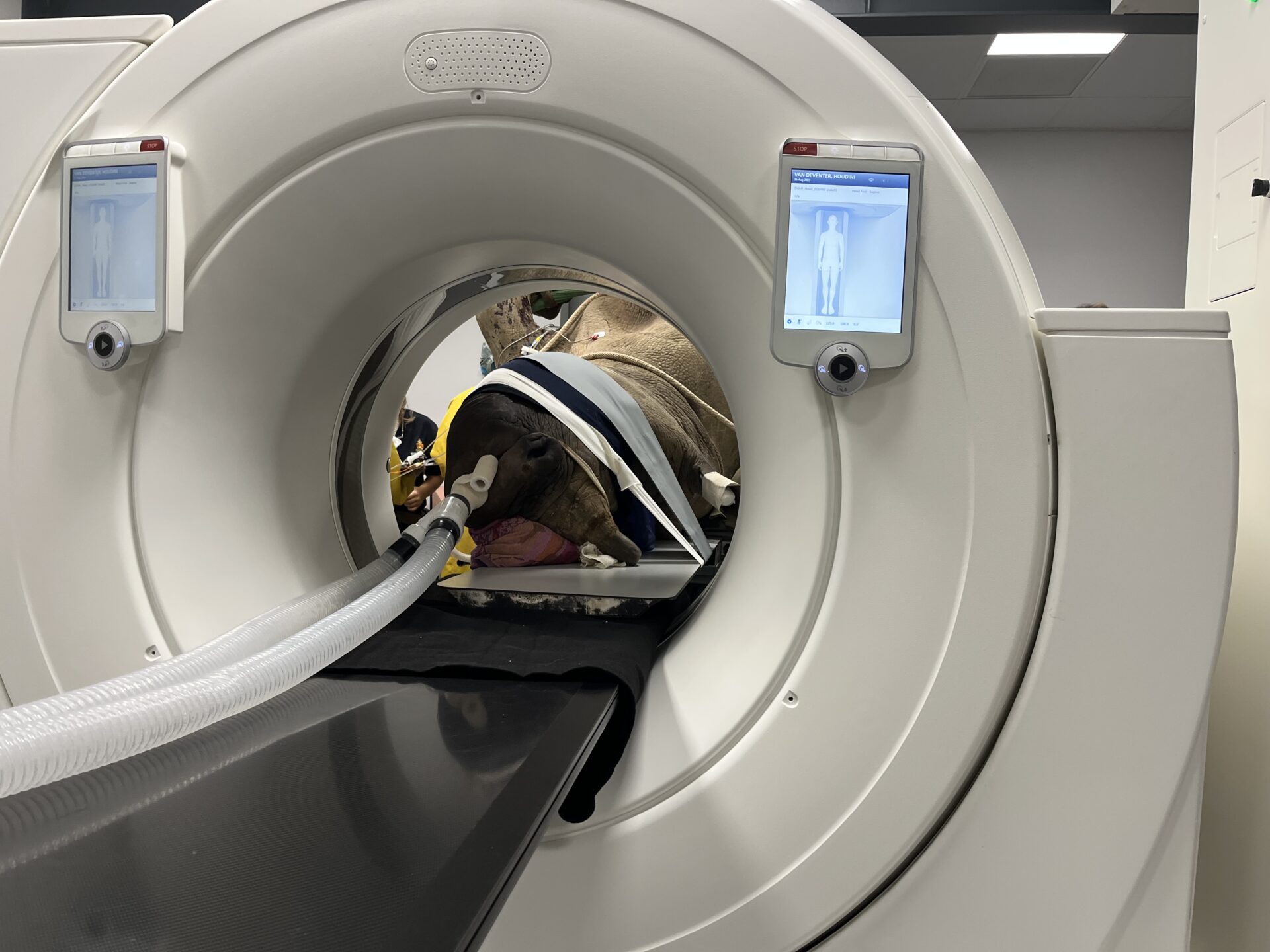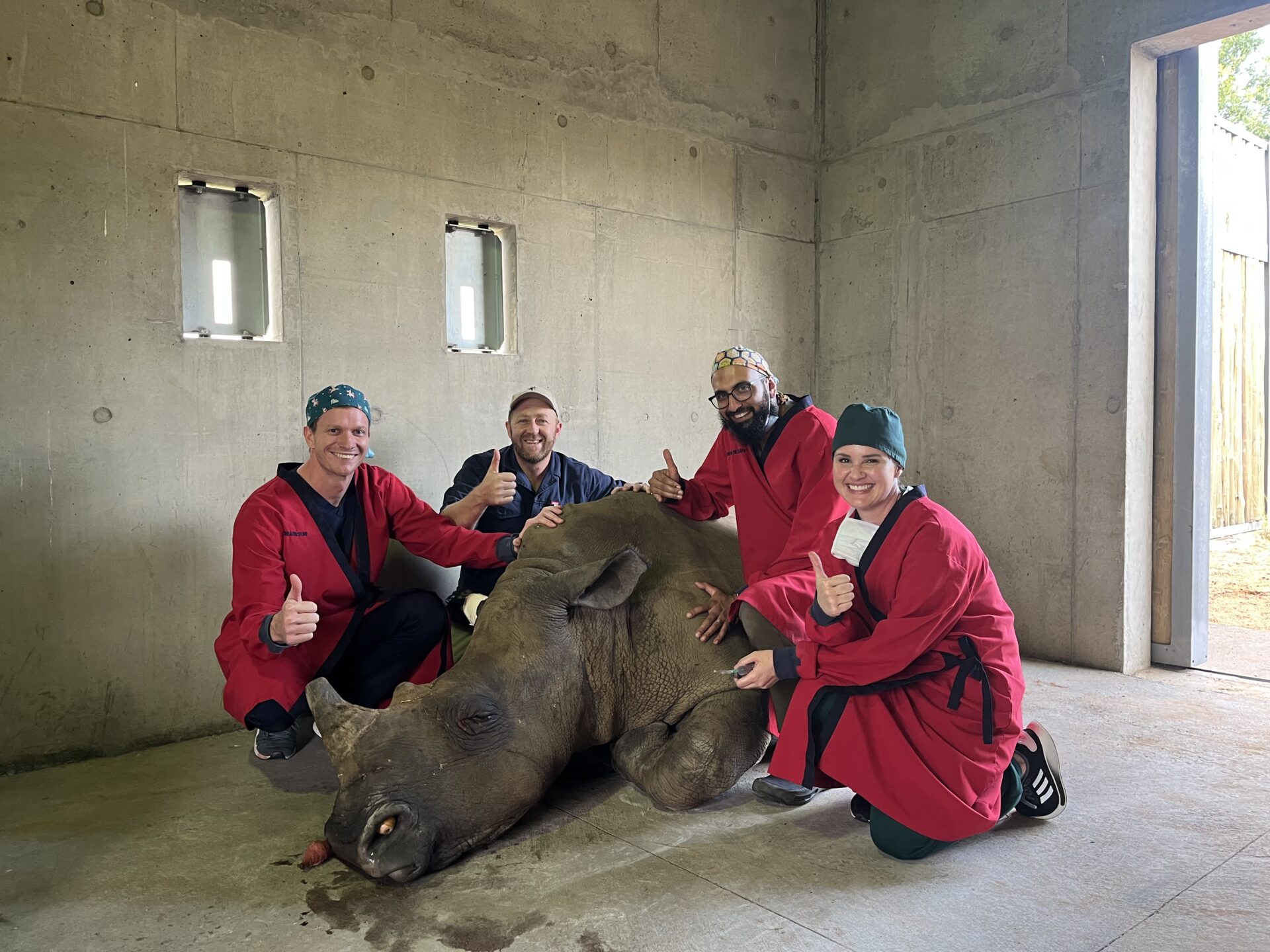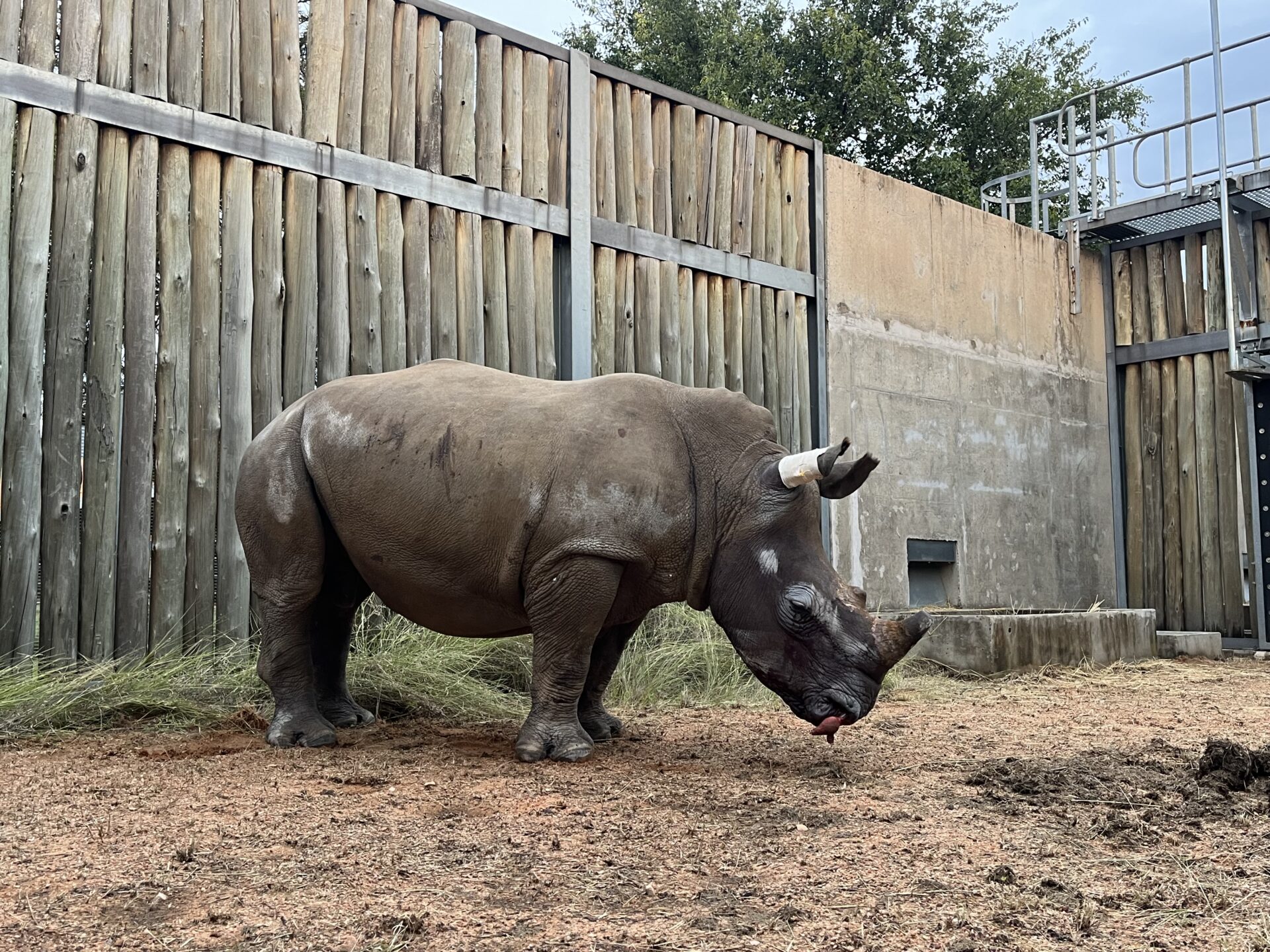With no playbook and high risks, South African vets came together to perform a procedure never done before… and gave Houdini his breath back.
Pretoria, South Africa (25 May 2025) – You don’t get a name like Houdini without surviving the impossible… and this four-year-old white rhino has done just that. Not once, but twice.
Years after surviving a brutal poaching attack that left him with a bullet wound through the nose, Houdini faced a new battle: he was slowly losing the ability to breathe. What started as a quiet struggle turned into a life-threatening condition and his carers knew something had to be done. Urgently. Thankfully, a remarkable team of veterinary specialists at the University of Pretoria stepped in, performing a groundbreaking six-hour surgery that gave this rhino a second shot at life. And every breath since has been nothing short of a miracle.
“This is a major problem for rhinos,” said Dr Bester. “Unlike humans, they can only breathe through their noses, and their sense of smell is essential for survival. For Houdini, this wasn’t just a breathing issue – it threatened his quality of life.”
Dr Bester conducted a nasal endoscopy and discovered pink-coloured tissue obstructing Houdini’s right nasal passage. The case was serious and way beyond what could be handled in the bush. So he referred Houdini to Professor Gerhard Steenkamp, a veterinary specialist in dentistry and maxillofacial surgery at the University of Pretoria’s Onderstepoort Veterinary Academic Hospital.
A CT scan painted a grim picture: Houdini’s entire right nasal passage was blocked and the obstruction was creeping into the left side too. The bullet that tore through his nose years ago had caused abnormal bone growth, compounding the issue and making every breath a struggle.

Initially, a low-invasive laser surgery was considered but the lesion was too large. The team, including Prof Steenkamp and equine surgery expert Dr Elza Hollenbach, knew that the only option left was an open surgery, a bold move that came with enormous risk.
“We knew we had to act fast,” Prof Steenkamp said. “This wasn’t just about clearing a nasal passage; it was about giving Houdini back his ability to live a normal life.”
But it wasn’t just the surgery that was complex, the anaesthesia was equally daunting. Houdini’s already compromised breathing meant any sedation would be tricky and rhinos are notoriously sensitive under anaesthesia.
Even healthy animals can suffer from serious complications while sedated due to their sheer size and physiology.
Dr Jacques O’Dell, a wildlife vet, along with a specialist anaesthesiology team led by Dr Abdur Kadwa, took on the challenge. They implemented a rare and innovative method called haemodilution, essentially collecting and saving Houdini’s own blood while replacing it temporarily with IV fluids, so that if bleeding occurred, he could be “transfused” with his own blood.
“This method hasn’t been reported in rhinos before,” said Dr Kadwa. “But it has been used in horses, dogs, and cats. To our knowledge, it’s the first time it’s been applied in South Africa, and possibly the world.”
After five hours and 55 minutes under anaesthetic, and a highly delicate surgery that involved cutting into the side of Houdini’s face, the team successfully removed the obstruction.

Houdini was gently moved to a specialised boma where he recovered under the watchful eyes of Dr O’Dell, veterinary students, and the wider Onderstepoort team. Just days later, the little survivor was up and about and by the end of the week, ready to go home.
“Seeing him walk out of the boma, breathing freely again, was an emotional moment for all of us,” said Prof Steenkamp. “He’s a fighter, and he’s earned every breath.”
This isn’t just a story about a rhino. It’s a story about resilience, innovation and what’s possible when people come together to do something extraordinary. It’s a reminder of the fragility of our wildlife and the power we have to help protect it.
And for Houdini, every breath he takes now is a breath filled with hope.


